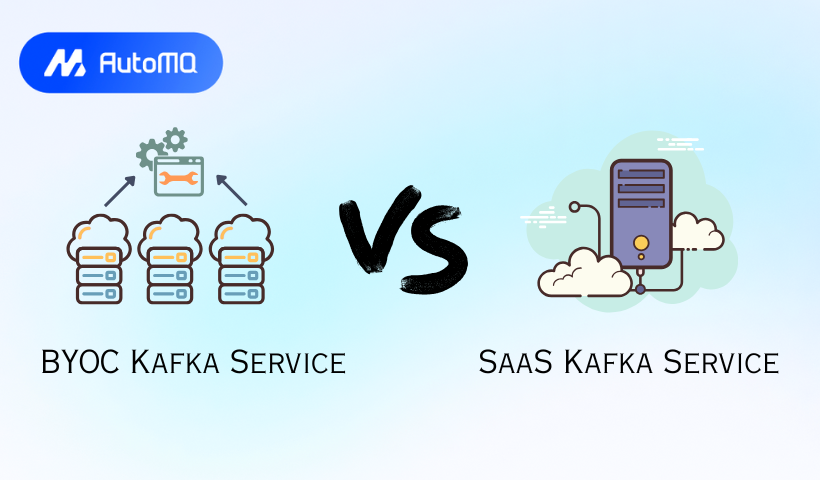Overview
Apache Kafka has become the de facto standard for real-time event streaming, powering everything from microservices communication to large-scale data pipelines. As its adoption grows, organizations face a critical decision: how to deploy and manage their Kafka infrastructure. Two prominent models have emerged beyond traditional self-management: Bring Your Own Cloud (BYOC) Kafka services and Software as a Service (SaaS) Kafka offerings. Understanding the nuances, benefits, and trade-offs of each is crucial for making an informed decision that aligns with your organization's technical capabilities, budget, security posture, and strategic goals. This blog aims to provide a comprehensive comparison to help you navigate this choice.
What is a SaaS Kafka Service?
A Software as a Service (SaaS) Kafka service offers a fully managed, cloud-hosted Apache Kafka experience. In this model, the service provider takes on the complete operational responsibility for the Kafka clusters and their underlying infrastructure [1]. This includes provisioning, configuration, maintenance, patching, upgrades, scaling, and monitoring.
How it Works & Core Concepts
SaaS Kafka services are typically multi-tenant environments where multiple customers share the provider's underlying infrastructure, though with logical isolation. Users interact with the Kafka service through standard Kafka APIs and client libraries, connecting their producers and consumers to an endpoint provided by the service. The core idea is to abstract away all the operational complexities, allowing developers to focus purely on building their streaming applications [2, 3].
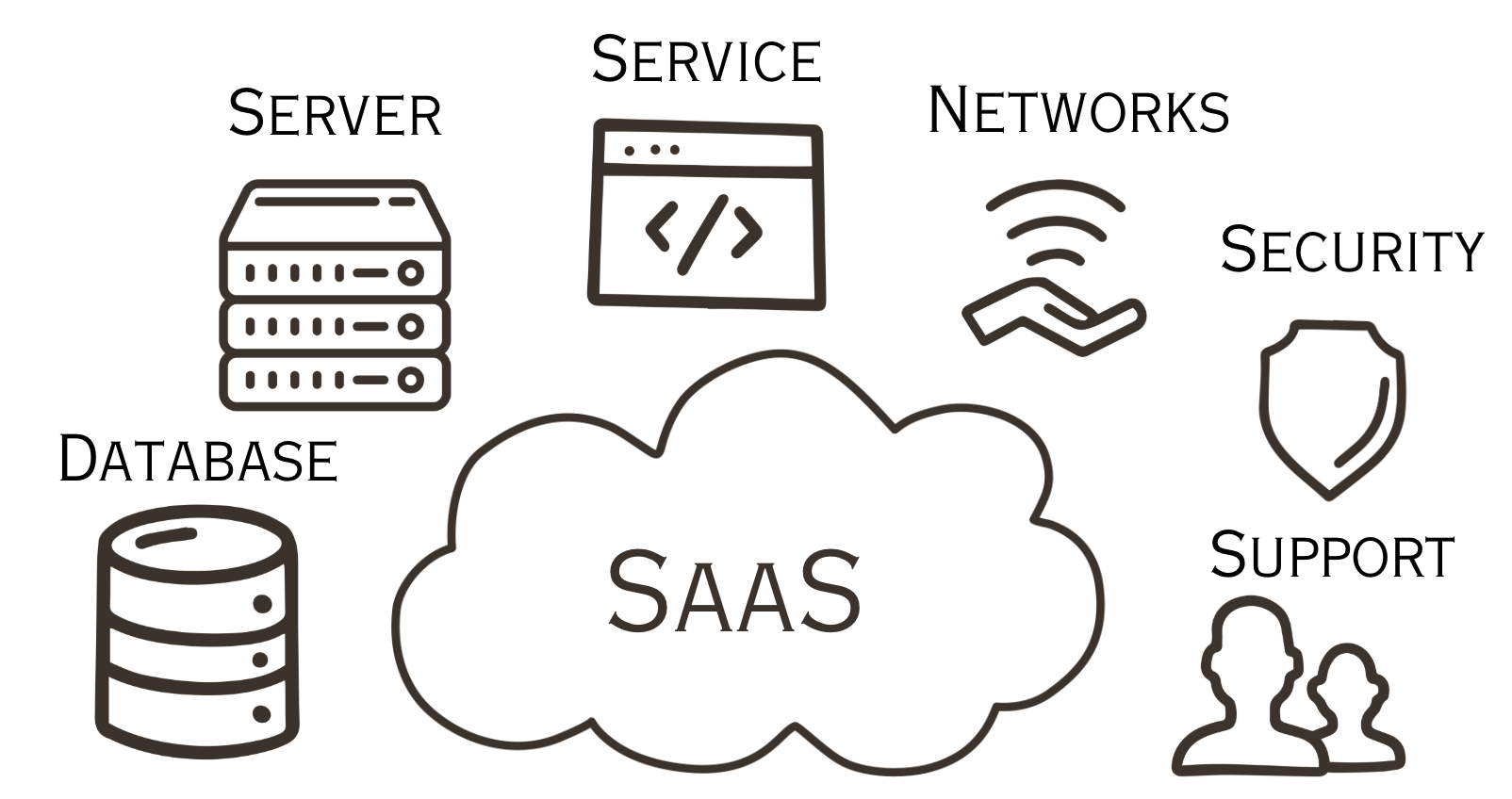
Pros
Ease of Use & Rapid Deployment: Clusters can often be provisioned in minutes through a user interface or API, significantly accelerating time-to-market for new projects [3].
Reduced Operational Burden: The vendor handles all infrastructure management, monitoring, and maintenance, freeing up internal teams from complex operational tasks [2].
Scalability & Elasticity: SaaS providers typically offer seamless scaling capabilities, allowing users to adjust capacity based on demand without manual intervention. Some advanced SaaS offerings feature cloud-native engines designed for elastic scaling and efficient resource utilization.
Vendor Expertise & Support: Users benefit from the provider's deep expertise in running Kafka at scale, often including 24/7 support and SLAs [4].
Predictable Cost Structure (Potentially): Many SaaS offerings have consumption-based or tiered pricing, which can be predictable if workloads are well understood [5].
Cons
Less Control & Customization: Users have limited control over the underlying infrastructure, specific Kafka configurations, and networking [6].
Data Sovereignty & Compliance Concerns: Data resides in the vendor's cloud environment, which might not meet stringent data residency or compliance requirements for all organizations [7]. However, many providers offer options for region selection and adhere to common compliance standards like SOC 2, and some offer Business Associate Agreements (BAAs) for HIPAA or attestations for PCI DSS [8, 9].
Potential Vendor Lock-in: Migrating away from a specific SaaS provider can be challenging due to dependencies on vendor-specific features or APIs beyond the core Kafka protocol.
Data Egress Costs: Moving data out of the SaaS provider's cloud or across regions can incur significant data transfer costs [5].
Security Reliance: While vendors implement robust security measures, the ultimate security of the infrastructure is in the vendor's hands, and customers share responsibility for securing their data and access [10].
What is a BYOC Kafka Service?
Bring Your Own Cloud (BYOC) Kafka services represent a hybrid approach. In this model, the Kafka service's data plane—the brokers and storage where your data resides—is deployed directly within your own cloud account and Virtual Private Cloud (VPC) [11, 12]. The Kafka service vendor manages the control plane, which handles the deployment, management, monitoring, and maintenance of the Kafka components running in your environment [13].
How it Works & Core Concepts
The customer provides access to their cloud account (e.g., AWS, Azure, GCP), and the BYOC vendor deploys and manages the Kafka software within that environment. This ensures that data remains under the customer's control, within their security and network perimeter [12]. Some BYOC solutions leverage modern architectural patterns, such as deploying stateless agents that interact directly with object storage in the customer's account, aiming for better cost-efficiency and scalability [11].
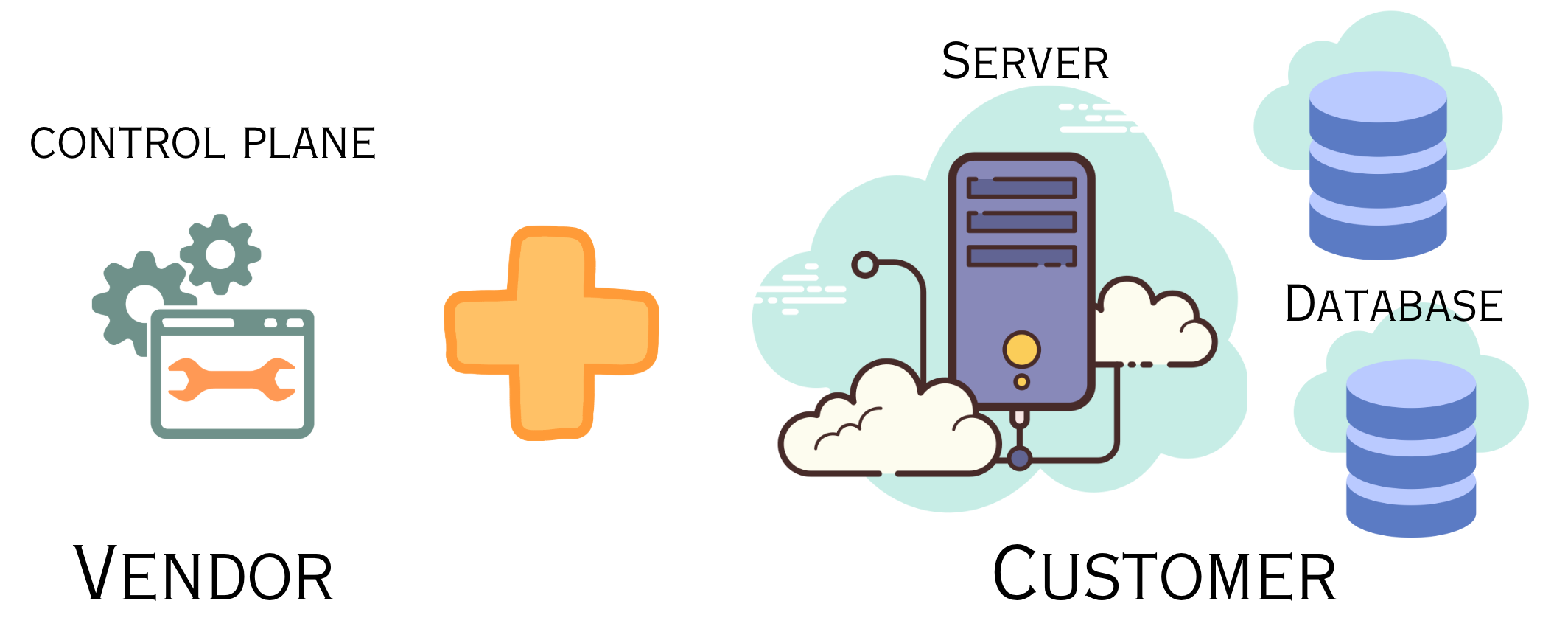
Pros
Data Control & Sovereignty: Data stays within the customer's VPC, addressing strict data residency, governance, and compliance needs [12, 7].
Enhanced Security: Customers can apply their own security policies, network configurations (like security groups and private endpoints), and IAM roles to the infrastructure running the Kafka data plane [14].
Potential Cost Optimization: BYOC can leverage existing enterprise agreements and reserved instances with cloud providers. It can also reduce or eliminate data egress costs if data is processed by applications within the same cloud environment [12].
Customization of Cloud Resources: Customers may have more flexibility in choosing the underlying cloud resources (VM types, storage configurations) if the BYOC model allows, aligning with their specific performance or cost requirements.
Reduced Vendor Lock-in (for data): Since data resides in the customer's cloud, migrating the data itself might be simpler than from a pure SaaS model, though application-level dependencies on the Kafka service still exist.
Cons
Shared Responsibility Complexity: While the vendor manages the Kafka service, the customer is responsible for the security and management of their cloud account, IAM permissions, VPC, and sometimes the underlying infrastructure costs and configurations [15, 11].
Operational Overhead (Customer Side): Requires more customer involvement in managing the cloud environment compared to a fully managed SaaS solution.
Cost Management: Customers are responsible for the underlying cloud infrastructure costs (compute, storage, networking), which need to be managed in addition to the BYOC vendor's service fee [5].
Vendor Access Management: Securely granting and managing the BYOC vendor's access to the customer's cloud environment is critical and requires careful configuration of IAM roles and permissions [14].
Side-by-Side Comparison: SaaS vs. BYOC Kafka
| Feature | SaaS Kafka Service | BYOC Kafka Service |
|---|---|---|
| Deployment Location | Vendor's cloud infrastructure | Customer's cloud account/VPC (data plane) |
| Primary Management | Vendor manages entire stack | Vendor manages Kafka service; Customer manages cloud account |
| Control & Customization | Low to moderate | Moderate to high (over cloud resources & network) |
| Data Sovereignty | Relies on vendor; region selection may be available | High; data resides in customer's VPC |
| Compliance | Depends on vendor certifications & shared responsibility | Easier to meet specific customer needs due to data location |
| Security | Vendor-managed infrastructure security; shared data & access security | Customer-managed cloud security; vendor secures control plane |
| Operational Overhead | Minimal for customer | Shared; higher for customers than SaaS |
| Scalability | Typically elastic, managed by vendor | Elastic, often managed by vendor within customer's cloud limits |
| Performance | Dependent on vendor architecture and SLAs | Can be influenced by customer's cloud choices & vendor architecture |
| Cost Structure | Subscription/consumption-based for service | Vendor service fee + customer's cloud resource costs |
| Potential Hidden Costs | Data transfer out, premium features, support tiers | Underlying cloud compute/storage/network, management overhead |
| Ease of Use & Setup | Very high | Moderate; requires cloud account setup & integration |
| Vendor Lock-in | Higher risk | Lower risk for data; still exists for service |
Common Issues and Challenges
SaaS Kafka Services
Noisy Neighbors: In multi-tenant environments, a poorly behaved or very demanding tenant could potentially impact the performance of others if isolation mechanisms are not perfectly robust [16].
Data Egress Costs: Transferring data out of the SaaS provider's network, or even between regions within the provider's service, can be expensive and lead to unexpected costs [5].
Limited Visibility and Control: Troubleshooting performance issues can be difficult without visibility into the underlying infrastructure. Custom Kafka configurations are often restricted.
Compliance & Data Residency: While many SaaS providers offer regional deployments and comply with major standards, meeting very specific or niche regulatory requirements can be challenging if data cannot be strictly confined to the customer's own controlled environment [7].
BYOC Kafka Services
Shared Responsibility Pitfalls: Misunderstandings or misconfigurations in the shared responsibility model can lead to security vulnerabilities or operational issues. The customer must correctly configure their cloud environment (IAM, networking, security groups) [15].
Complexity of Initial Setup: While simpler than self-managing Kafka from scratch, setting up a BYOC environment still requires cloud expertise to provision the necessary permissions and network configurations for the vendor.
Cost Management for Underlying Resources: Customers need to monitor and manage the costs of the cloud resources (compute, storage, network) consumed by the Kafka service in their account, in addition to the BYOC vendor's fees [5].
Integration with Vendor Control Plane: Ensuring secure and reliable communication between the vendor's control plane and the data plane agents in the customer's VPC is crucial and depends on both vendor design and customer network setup.
Best Practices for Choosing Your Kafka Path
Choosing between SaaS and BYOC Kafka isn't a one-size-fits-all decision. Consider the following factors:
Data Governance, Sovereignty, and Compliance:
High Priority? If you have strict data residency requirements (e.g., data must never leave your VPC or specific geographic boundaries) or need granular control for compliance (e.g., specific audit trails on the infrastructure level), BYOC is likely a better fit [7, 12].
Standard Compliance Met by Vendor? If the SaaS provider meets your necessary compliance standards (e.g., provides a BAA for HIPAA, SOC 2, ISO 27001 attestations) and regional needs, SaaS can be simpler [8, 9].
Team Skills and Operational Capacity:
Limited Kafka/Cloud Ops Expertise? If your team is small, focused on application development, or lacks deep Kafka or cloud infrastructure management skills, SaaS significantly lowers the operational burden [2].
Strong Cloud Ops Team? If you have a capable cloud operations team that can manage your cloud environment, IAM, and networking, BYOC becomes a viable option, allowing you to retain data control while offloading Kafka management specifics to the vendor [15].
Cost and Budget:
Predictable Subscription Desired? SaaS can offer predictable costs if usage is stable, but watch out for data transfer and premium feature costs [5].
Leverage Existing Cloud Credits/Discounts? BYOC allows you to use your existing cloud provider commitments and potentially optimize underlying resource costs [12]. However, you'll pay for vendor service fees plus cloud resources.
TCO Analysis: Conduct a thorough Total Cost of Ownership analysis considering software fees, infrastructure, data transfer, and personnel for both models.
Time-to-Market and Agility:
Need for Speed? SaaS offerings generally provide the fastest way to get a Kafka cluster up and running [3].
Control More Important than Initial Speed? BYOC setup takes more effort initially but provides more long-term control.
Control and Customization:
Standard Kafka Sufficient? If standard Kafka configurations offered by SaaS providers meet your needs, SaaS is simpler.
Need Specific Cloud Infra Control? If you need fine-grained control over the network environment or underlying compute/storage (within your VPC), BYOC offers this.
A general guideline: start by evaluating SaaS solutions. If they meet your technical, security, compliance, and cost requirements, they often provide the path of least resistance. If SaaS falls short, particularly on data control, sovereignty, or deep integration with resources within your own cloud account, then BYOC becomes a strong contender [6].
Conclusion
The decision between a BYOC Kafka service and a SaaS Kafka service hinges on a careful evaluation of your organization's specific needs regarding data control, operational capacity, security and compliance requirements, cost considerations, and desired agility. SaaS offers unparalleled ease of use and speed by abstracting away operational complexity, making it an excellent choice for many. BYOC provides a compelling alternative for organizations that require greater control over their data and cloud environment, often driven by stringent compliance or data sovereignty needs, while still benefiting from a managed Kafka service.
By understanding the core differences, architectural models, and the shared responsibilities involved, you can choose the Kafka deployment strategy that best empowers your real-time data streaming initiatives today and scales for the future.
If you find this content helpful, you might also be interested in our product AutoMQ. AutoMQ is a cloud-native alternative to Kafka by decoupling durability to S3 and EBS. 10x Cost-Effective. No Cross-AZ Traffic Cost. Autoscale in seconds. Single-digit ms latency. AutoMQ now is source code available on github. Big Companies Worldwide are Using AutoMQ. Check the following case studies to learn more:
Grab: Driving Efficiency with AutoMQ in DataStreaming Platform
Palmpay Uses AutoMQ to Replace Kafka, Optimizing Costs by 50%+
How Asia’s Quora Zhihu uses AutoMQ to reduce Kafka cost and maintenance complexity
XPENG Motors Reduces Costs by 50%+ by Replacing Kafka with AutoMQ
Asia's GOAT, Poizon uses AutoMQ Kafka to build observability platform for massive data(30 GB/s)
AutoMQ Helps CaoCao Mobility Address Kafka Scalability During Holidays
JD.comx AutoMQ x CubeFS: A Cost-Effective Journey at Trillion-Scale Kafka Messaging
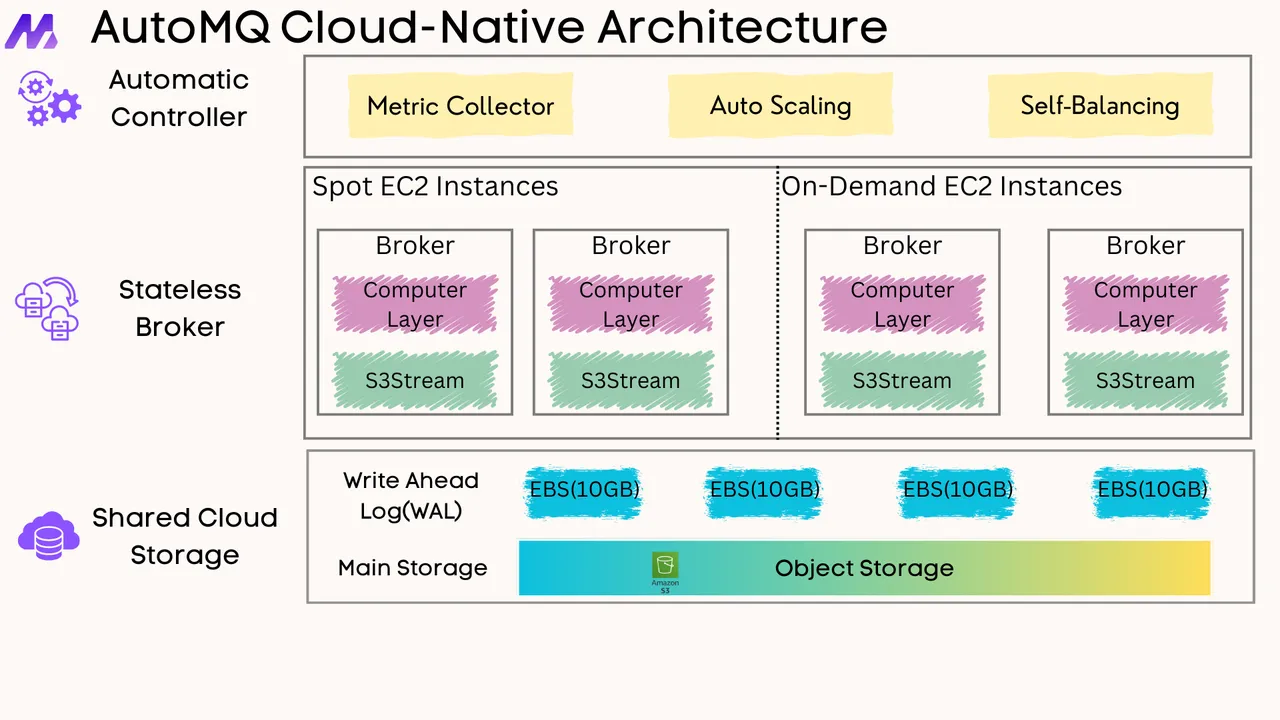





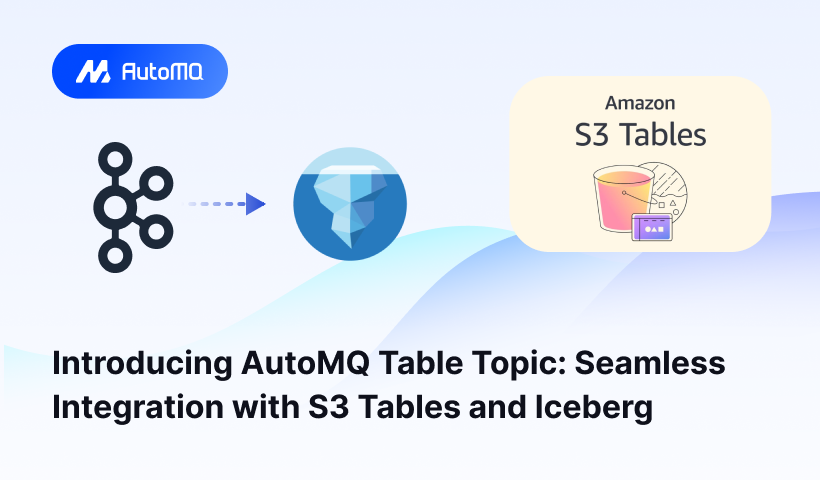
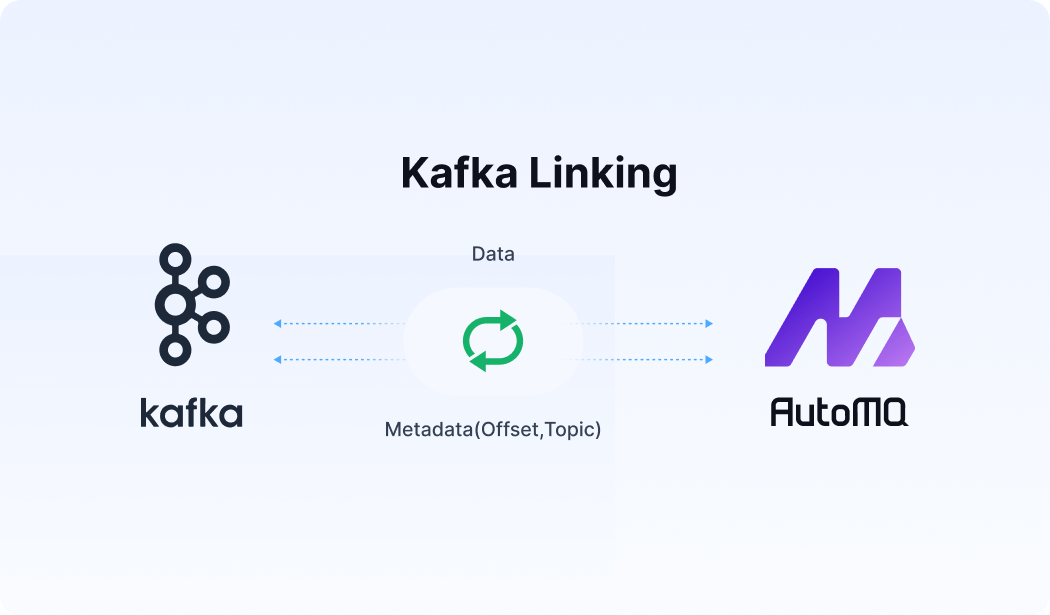




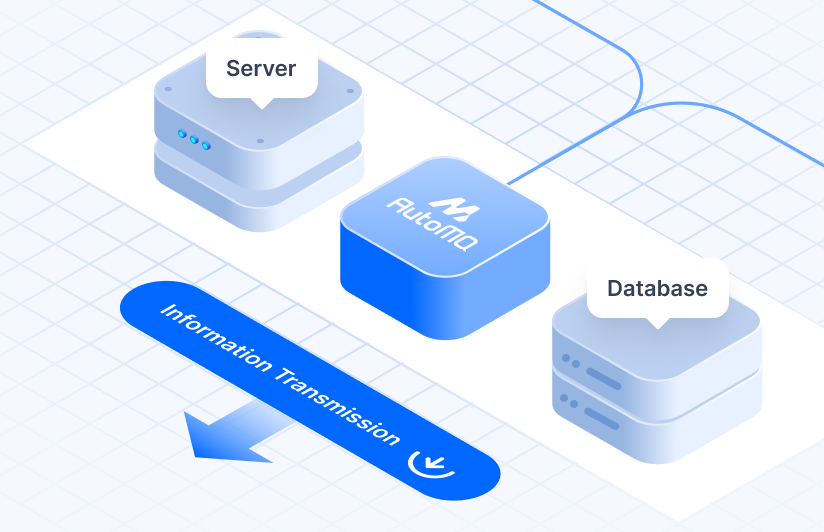
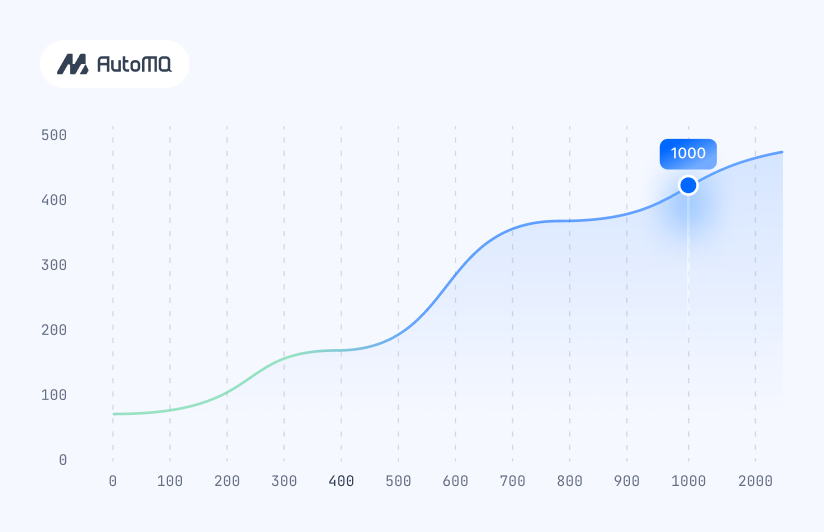


.png)
